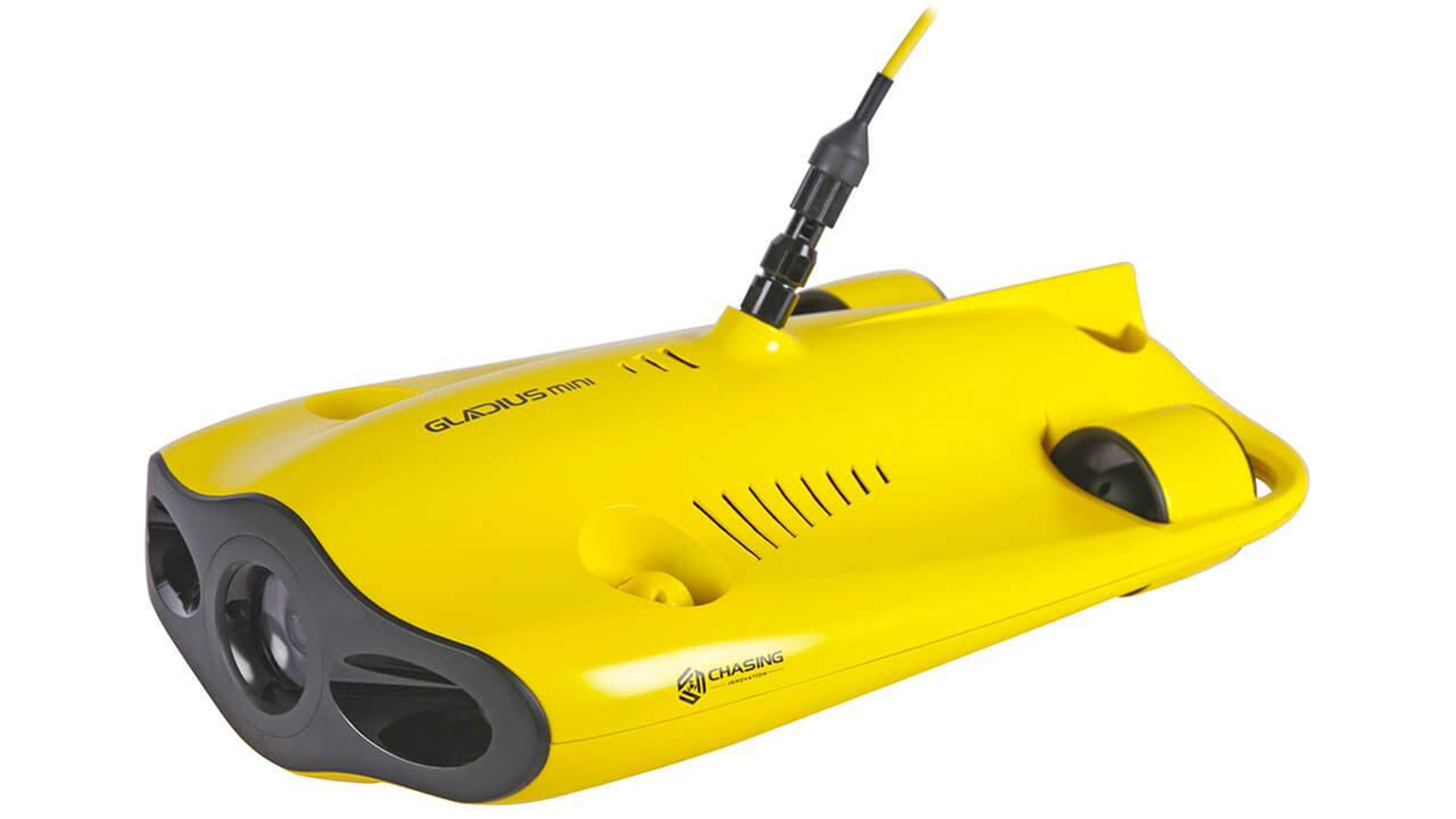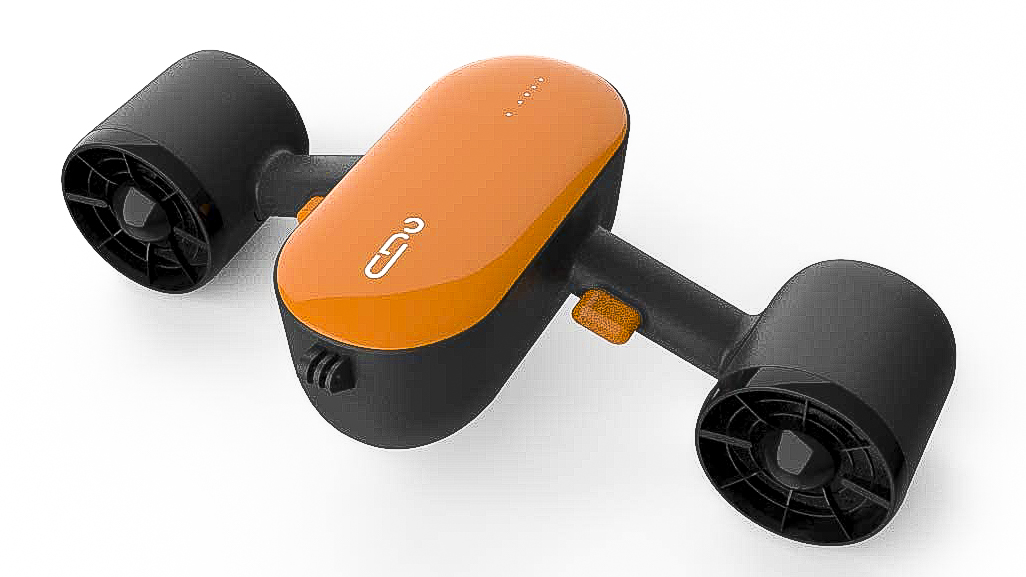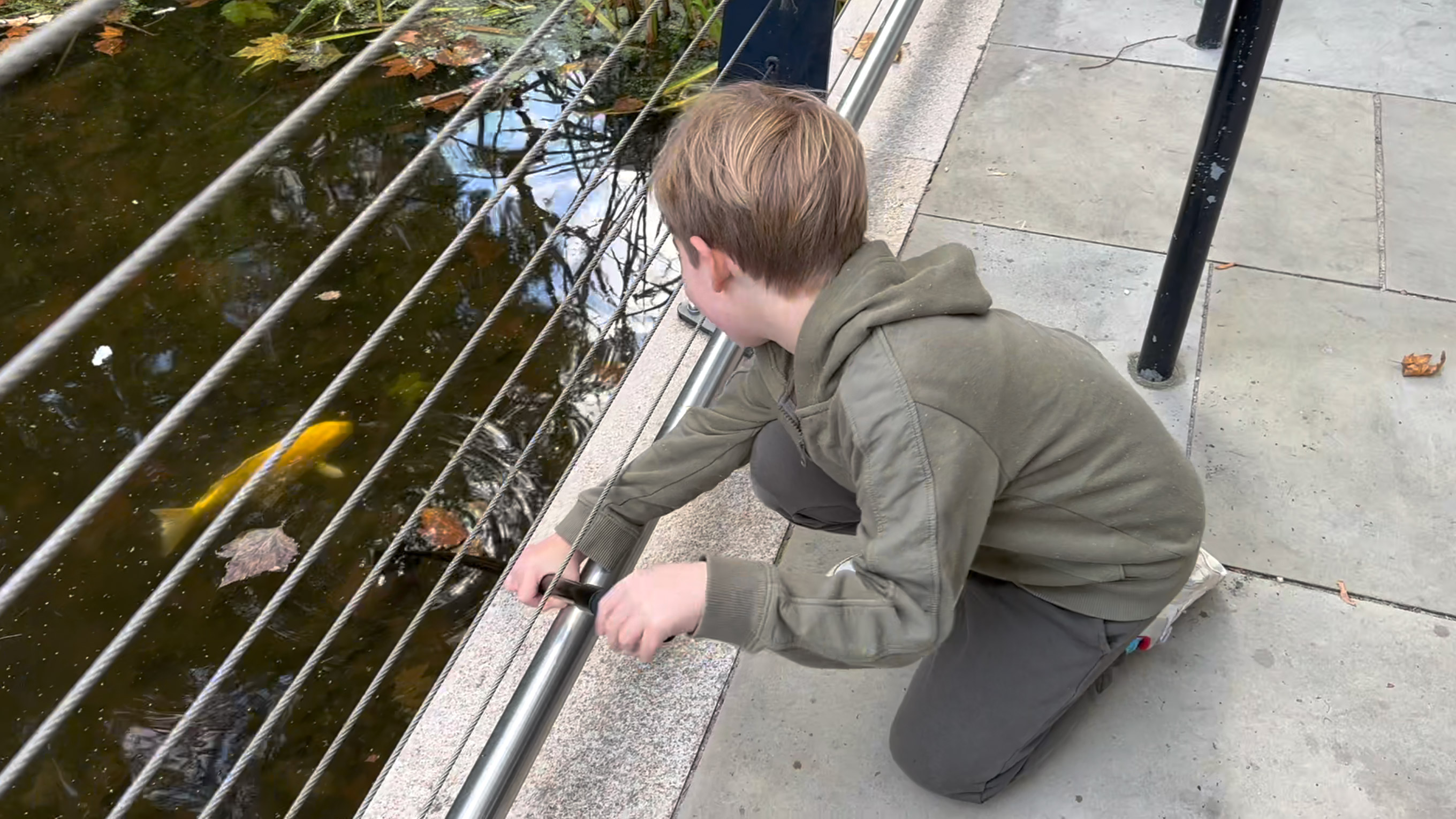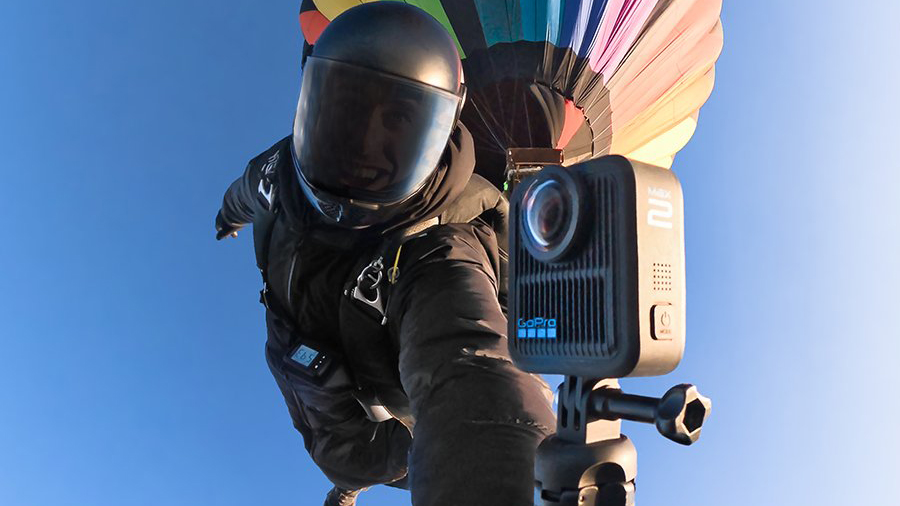The best underwater drones and ROVs in 2025
Explore the deep, check your boat and improve your fishing, with the best underwater drones and ROVs
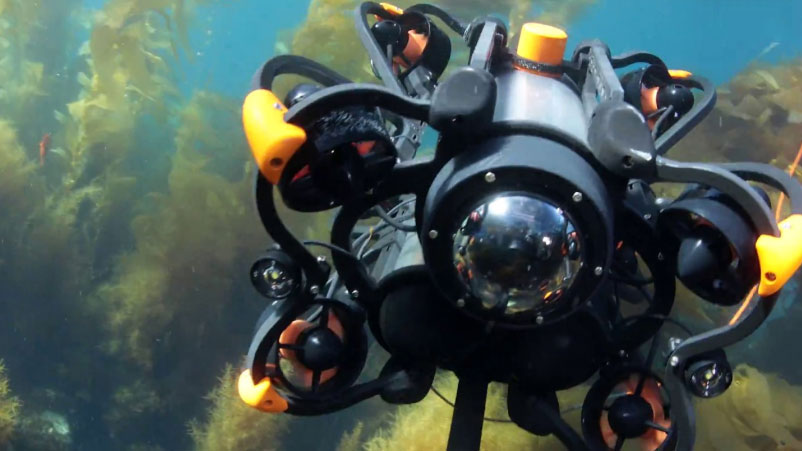
The best underwater drones make it easy to explore below the surface. These little remote-controlled submarines (often called ROVs) can dive far deeper than the 40m/130ft limit of most scuba divers, letting you capture amazing footage. They’re not just for fun either; they’re also handy for checking your boat and giving you an edge on a fishing trip.
Our experts have rounded up the best underwater drones and ROVs available right now. We’ll explain what sets them apart and point out the key features so you can pick the right one for you.
Prefer flying a drone above the water instead? Take a look at our guide to the best drones for fishing. (I once tried one that could land on water, but let’s just say it sounded better in theory than in practice!).
Top picks

With excellent smart features, a 4K camera you can turn separately, a decent depth and a 5th thruster for responsive operation, this is our top pick when it comes to underwater drones available today.
Read more

With a clamping force of 100N on its robotic arm and an advanced AI Vision Lock system, the V6 Expert provides exceptional stability and the ability to perform complex tasks. The 360° movement and 6,000-lumen lights make it a powerful tool for professionals.
Read more
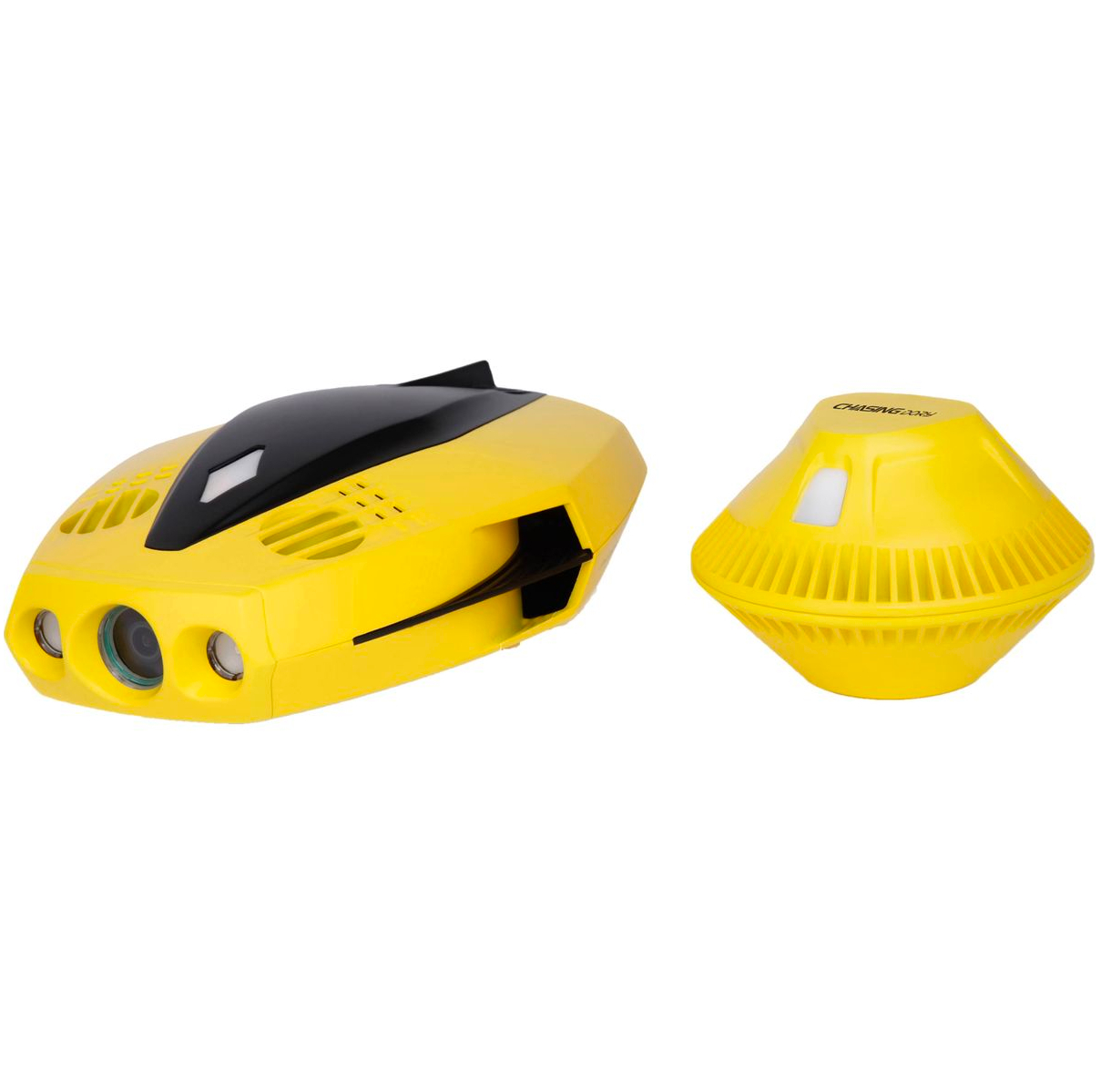
Looking for a bargain? This underwater drone is nice and affordable, but still offers 4K resolution, a Wi-Fi bouy and five-thruster manoeuvrability. That makes it a great choice for your first underwater drone.
Read more
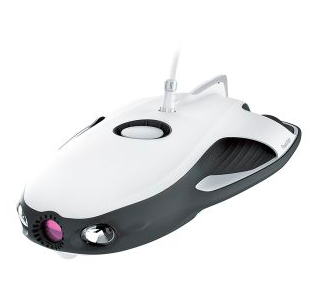
Want to really explore the sea? With 4K camera and dual headlights, this PowerVision PowerRay is a great drone for these purposes, and the option of a 'Wizard' edition with Radar helps add flexibility too.
Read more
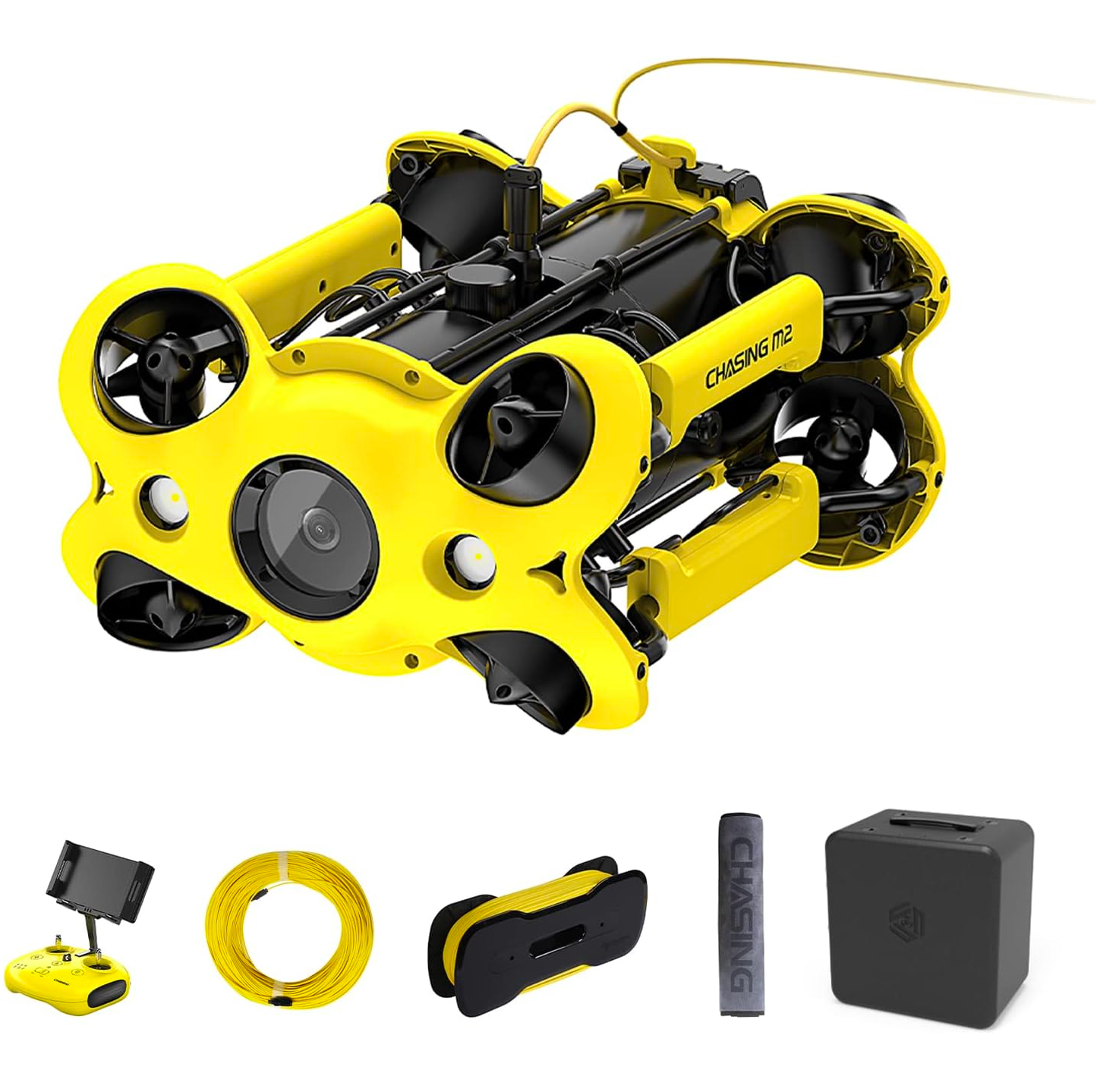
If you want to create content underwater, the M2 (also in Pro and Pro Max variants) is our top pick. It has the power for survey missions like hull and pipeline inspection and is ideal for capturing content reliably with powerful lights.
Read more

With over 20 years of expertise as a tech journalist, Adam brings a wealth of knowledge across a vast number of product categories, from home security cameras, to 3D printers and, above all (see what we did there?) drones. Well, usually above all, though he's also put them in water, in this case on purpose! He is also the author of a number of books including The Complete Guide to Drones, The Smart Smart Home Handbook, 101 Tips for DSLR Video and The Drone Pilot's Handbook.
Best underwater drones and ROVs
Why you can trust Digital Camera World
Best for most people
1. Chasing Innovation Gladius Mini
Specifications
Reasons to buy
Reasons to avoid
The Chasing Innovation Gladius Mini is supplied in a nice backpack; like one a photographer might use to carry a body and lenses, with a laptop in a separate bay. Setting up is reasonably easy – an included towel means you can set the drone down on sharp coastal rocks safely.
On the downside, the protective caps for the 50m or 100m tether cable are easily lost, but otherwise, the drone is solidly built and can be thrown into the sea after setup, and can easily take a few knocks underwater.
The bright color is easily spotted too. Smart features include depth-lock (like altitude hold on a flying drone), and there is 64GB storage to record. The five thrusters make the drone quick to respond – useful as you need to tilt the body up or down to look around. You can lock the pitch, but the camera (and accompanying 1,200-lumen lights) cannot be separately turned, making this a real pilot’s craft, and fun with it.
The thoughtful app is easily operated, and VR compatible, and the 4K camera produces great results. Our only complaint is that in rougher seas, the image stabilization could be better. Overall, though, it's a great product.
Best for power
2. Qysea Fifish V6 Expert
Specifications
Reasons to buy
Reasons to avoid
The Fifish V6 Expert is an advanced professional-grade ROV, and our top pick for anyone needing serious power and versatility for commercial or demanding hobbyist applications. Building on the success of its predecessors, the V6 Expert introduces a host of upgraded features, most notably the AI Vision Lock System which allows the drone to automatically lock onto a subject and maintain its position against currents, making it far easier to capture stable footage or conduct detailed inspections.
With six vectored thrusters, the V6 Expert offers 360° of omnidirectional movement and a ±0.1° posture lock, giving the pilot unparalleled control. It's a true "underwater tripod," ideal for complex shots or precise maneuvers. The 6,000-lumen LED lights are a significant upgrade, providing brilliant, cinematic-quality illumination in the murkiest of conditions. The UHD 4K camera is highly capable, and you can also capture slow-motion video at up to 240fps.
Best value
3. Chasing Innovation Dory
Specifications
Reasons to buy
Reasons to avoid
This is in many respects a smaller version of Chasing’s Gladius Mini. It’s certainly the same striking yellow, and pleasingly incorporates the maneuverable five-thruster design. This makes it possible to tilt the body (and, by extension, the camera) up and down. If you think that might make it hard to control, worry not – the depth lock feature is retained from its bigger brother too.
So how has Chasing sliced the price so low? Firstly the camera is a more modest 1080p, supported by only 250 lumens of light (at shallower depths this shouldn’t be an issue). Secondly the umbilical is significantly shorter, though the surface end is actually a floating Wi-Fi buoy, so you can throw it in the water and, so long as you’re within Wi-Fi range of it (admittedly not far given the water), you have control, maximizing the use of the 15m (50ft) tether.
Finally, that control is all on-screen using the app, so there is no physical controller unit. That means you’ll need to be cautious of getting water on the touch screen. But on the plus side, the battery is contained in the drone and the only element you’ll need to charge, and the 720p live feed is ideal for piloting with. For most, this will be all the underwater drone needed, and the app is well-featured, even supporting live streaming to social media. This could make a boat trip more fun, or even add educational value to exploring lakeside pools.
Read: The best underwater housings for cameras and phones
Best for explorers
4. PowerVision PowerRay
Specifications
Reasons to buy
Reasons to avoid
Traveling underwater is not a friendly environment for the high-frequency radio used for the live video feedback on aerial drones. So the PowerRay is provided with a 70m (230ft) umbilical cable that gently rests behind it, as it's propelled by its two horizontal props. The body also features a central vertical thruster to make changing depth a straightforward process that won’t cause tangling of the communication cable.
The depths can be a murky place, even the first few meters, so the Ray adds two dimmable 450-lumen headlight lights to illuminate your subject, which can be captured in 4K (30fps max) or 4,000 x 3,000-pixel stills. With a maximum ISO of 1600, the camera is more than capable in the depths the PowerRay can manage, though the 1/2.3-inch sensor could be bigger in a perfect world. 32 or 64Gb SD storage is provided depending on the version you choose, or you can put your own card in.
There is a PowerRay Explorer which is the basic video shooting drone, and a more expensive PowerRay Wizard edition which adds the PowerSeeker sonar device (which can detect the underwater landscape and use temperature data to identify fishing hotspots), bait dropper, and a carry-on friendly travel case and Zeiss VR One Goggles, which provide an alternative means of exploring the depths from the deck.
The latter isn’t just good fun, it makes enjoying the 1080p live feedback easier than on your phone screen on a bright day, although the price differential between the Explorer and Wizard versions is considerable in some stores.
Best for content creators
5. Chasing M2
Specifications
Reasons to buy
Reasons to avoid
Chasing is a big brand in the ROV world, and the M2 makes it obvious why. The eight corner-mounted thrusters are operated from a joypad-style control, so piloting through the water at a nifty 3 knots is an accessible experience to all.
The built-in camera is an ƒ/1.8 12 megapixel affair with a 1 / 2.3 CMOS and electronic stabilization so the motors shouldn’t disturb your footage. The 152˚ field of view is pretty wide. Video can be caught at 4K 30fps (up to 120fps is available at 1080p) but if you’re keen to capture with a GoPro there is a mount.
There are some exciting accessories for the M2, not least a robotic arm and a powered tether reel, or E-Reel, which will keep the tether out of the way automatically. There's also a swappable battery. If we could change anything, the lights would be further from the lens and brighter (they're 2 x 2000 lumens), but on the plus side, there are accessory rails.
Alternative ideas
6. Geneinno S2
Specifications
Reasons to buy
Reasons to avoid
If you feel you’d like to get down there with the glories of the deep, rather than just pilot a camera, then the Trident underwater scooter is the device for you. Built with a sizeable lithium battery to pull you along through the water, along with some simple controls, the S2 builds on the success of their IndieGoGo-launched first generation.
Photographers are not forgotten though; there is a GoPro camera mount on the front so you can record your trip just by screwing on your underwater camera in its housing. It's nice to be saving on a camera you might well already have, plus you need only upgrade as you choose.
The Trident is driven simply by squeezing the triggers on each arm – it’s almost too easy, which is why there is both a kids mode and an app that allows you to enable a ‘parent mode’ and remotely monitor your kids while preventing submersion. In normal use, it can dive, but if you let go it floats, even with a GoPro attached, which alleviates a few concerns.
9. MOOCOR Underwater Fishing Camera
Specifications
Reasons to buy
Reasons to avoid
Moocor’s fishing cameras offer an alternative to an underwater drone, sacrificing the control offered by thrusters and joysticks for the significantly lower investment required to dangle a camera below the surface. This should be enough for many, offering a perspective on fishing which you might have only imagined before. Set it up correctly and you’ll see the hook just before the lens.
If your primary purpose is a peek below the surface for fishing or just interest, then a big advantage to this is a relatively small and light battery – here 4,500mAh – can offer around six hours of power. On the downside, 1280 x 720 resolution, while offering a good view, certainly isn’t up there with 4K or 1080p, so you won’t be able to use the video for professional purposes. We would have also preferred to see a more modern codec for the video file.
See also: Best underwater fishing cameras
How to choose an underwater drone
Choosing a drone to explore beneath the surface isn’t the same as picking your ideal aerial drone. While, on the plus side, you’re unlikely to be forced into a weight category by aviation authority regulations, flying drones do have the advantage of traveling through the air, where radio waves travel relatively freely. Water isn’t a friendly environment for remote control, and certainly not video signals, so you’ll need to work around a tether cable. Ensuring this doesn’t encroach on your video is a skill you’ll need to practice, though of course boat inspections and the like don’t require quite the same caution.
- How low can you go: Knowing the depth your ROV can safely reach is important; more so if you're looking to explore the ocean than have fun in the pool and near the beach. The length of the tether is important here too.
- Maneuverability: Some ROVs use extra rotors to turn more quickly and to enable rolling on the center axis, which gives you more options – this is sometimes called a vectored capability.
- Fishing: If you’re into fishing, then a drone can help identify a good spot before you cast your line. Some drones also have the option of accessories like sonar detectors which can really boost your catch.
- Tether management: Though a tether is essential if you want to view live video previews from the depths, not every manufacturer supplies a reel – an essential management tool.
- Battery life: In general this is notably longer than flying equivalents, but it should be remembered that with a speed of a few knots it’ll take longer to return home (if you have to pull on the tether, there are obviously risks, but it is a fall-back).
- Content storage: How will your drone record video and images? If it uses your phone as a monitor, will the app work and will there be a handy file transfer feature?
Frequently asked questions
How deep can underwater drones go?
Typical commercial underwater drones, or ROVs, can reach depths between around 10 to 150 meters (30 to 492 feet). The deeper the water, the more pressure acts on the drone, so the stronger it needs to be. Specialist ROVs have probed much deeper; the wreck of the Titanic, at 4000m (13,000 feet), has been thoroughly explored, and there is even an autonomous underwater vehicle capable of exploring the Marinara Trench, three times that depth.
Are there any wireless underwater drones?
Most underwater drones have long tethering cables to the controls because water blocks the transmission of video and control signals. There is a drone, the Exray, by Hydromea, which bucks this trend. It uses 'optical communication tech' (flashing a light quickly) so still needs a base with a cord nearby.
Do you need a license to operate an underwater drone?
No. There might be certain circumstances where specific locations are protected by local laws but, unlike aerial drones, ROVs have yet to attract the attention of legislators. It doesn't seem likely soon either, since there is no risk posed to air traffic or falling onto someone.
What is a cheaper alternative to an underwater drone?
An alternative that might work for work close to the surface is a waterproof action camera like the DJI Osmo Action 5 Pro. That device’s ‘Adventure Combo’ comes with an extension pole which can be used to capture video from underwater, and a nice large image sensor that copes well with low light. Even better, the 5 Pro version also has a pressure sensor so can add depth (or altitude) information to the video metadata; that makes it ideal for following fish or inspecting small boats and creatively fascinating. You might not get the advantage of live view when a camera is in water and not connected via cable (radio doesn't like water), but action cameras can be a lot of fun for the whole family (as my son is demonstrating in the photo). We keep a full list of the best waterproof cameras too.
Another option is one of the best 360-degree action cameras. I tried the then-best camera, the Insta-360 X3 with its Invisible Dive Case accessory, reviewed here.
Are there any drones which can go underwater AND fly?
No. Well, not yet anyway. There is more than one prototype out there, however, and the most advanced of which is probably the one seen in the TJ-FlyingFish prototype on YouTube.
Is an underwater drone useful for fishing?
Yes, because you get an eye in the deep, but aerial drones can help too – our list of best fishing drones has models which help you drop bait just where you need it. Even just any of the best camera drones can give you a good perspective by pointing the camera straight down from above; this often makes it easier to see into water than from near the surface and looking at an acute angle.
What is the highest resolution underwater camera or ROV?
While most of the ROVs in this list have cameras of 1080P or 4K, similar to land drones, they don't have exceptionally high pixel resolution for stills. The best solution for underwater photography is likely still to get one of the best underwater housings for cameras or phones.
You might also like
Something that might surprise you is just how able modern drones, even light ones, are able to cope with a sea breeze. Check our guide to the best beginner drones too, or just think about more traditional waterproof devices like action cameras.
The best camera deals, reviews, product advice, and unmissable photography news, direct to your inbox!

With over 20 years of expertise as a tech journalist, Adam brings a wealth of knowledge across a vast number of product categories, including timelapse cameras, home security cameras, NVR cameras, photography books, webcams, 3D printers and 3D scanners, borescopes, radar detectors… and, above all, drones.
Adam is our resident expert on all aspects of camera drones and drone photography, from buying guides on the best choices for aerial photographers of all ability levels to the latest rules and regulations on piloting drones.
He is the author of a number of books including The Complete Guide to Drones, The Smart Smart Home Handbook, 101 Tips for DSLR Video and The Drone Pilot's Handbook.
